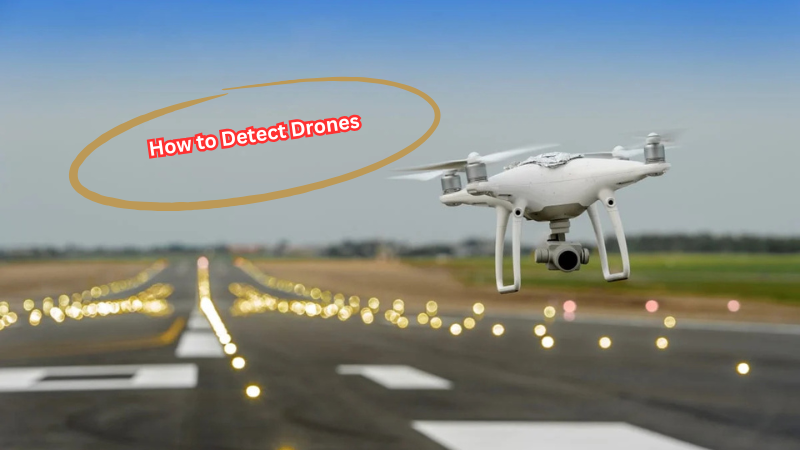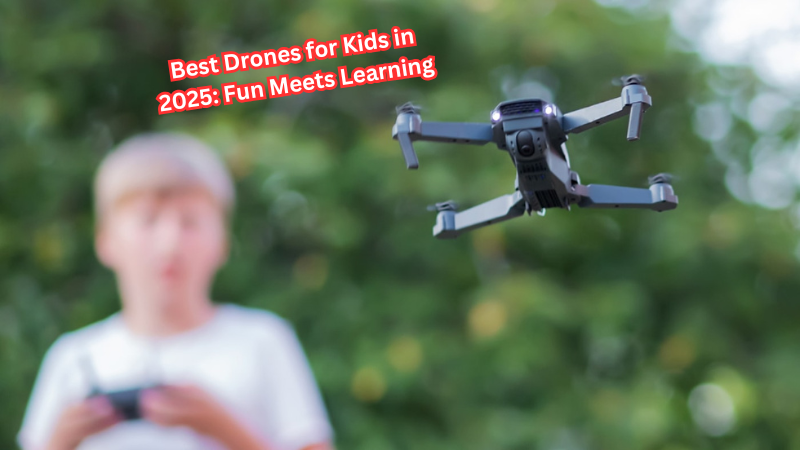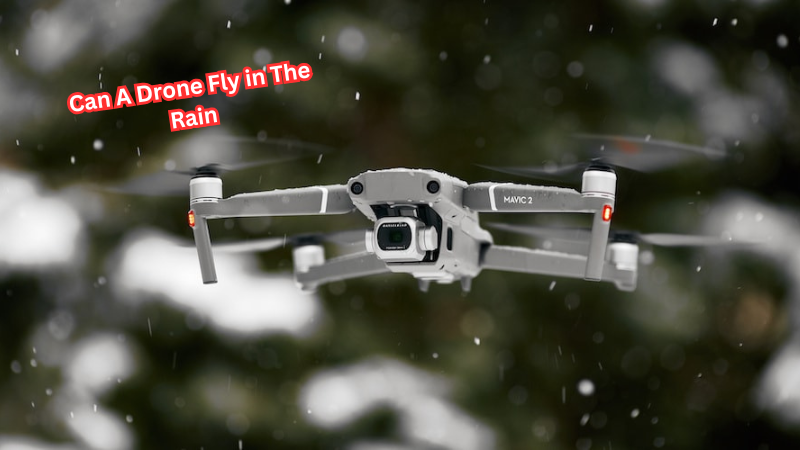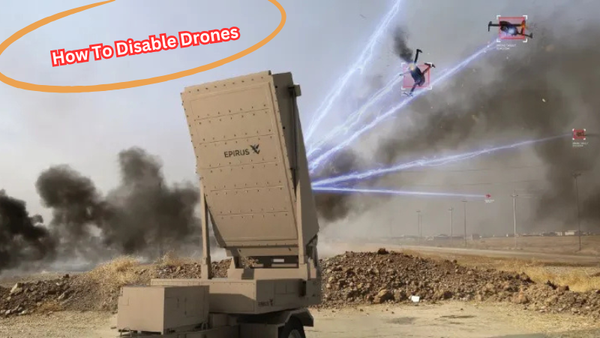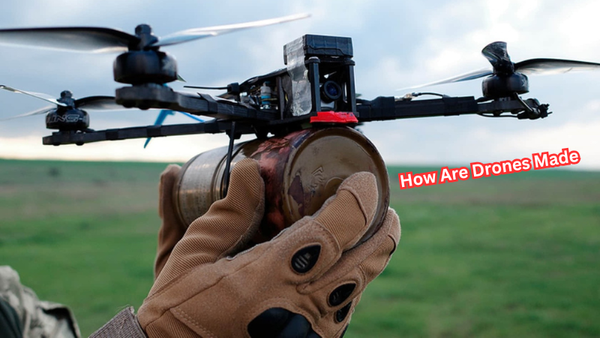Drones have become a common presence in our skies, used for everything from photography and deliveries to surveillance and defense.
While they offer incredible benefits, their widespread use also raises concerns about privacy, security, and safety. Whether it’s a recreational drone invading personal space or an unauthorized drone near restricted areas, detecting these devices is becoming a necessary skill.
This guide will equip you with the knowledge to recognize drones through sound, sight, and technology. You’ll learn how drones operate, techniques for spotting them, and the legal aspects of handling suspicious activity. By understanding these methods, you can protect your space while respecting laws. Stay informed, alert, and ready to address the growing challenges of drone detection.
What is a Drone?
Before we dive into detecting drones, it’s important to understand what exactly we mean by “drone”. In simple terms, a drone is an unmanned aerial vehicle (UAV) that can be controlled remotely or fly autonomously. They come in various shapes and sizes, from small quadcopters used for recreational purposes to larger fixed-wing aircrafts used for military and commercial applications.
Drones are equipped with cameras, sensors, and other technology that allow them to perform a wide range of tasks. They typically have four or more rotors, making them capable of vertical take-off and landing as well as hovering in place. Some drones also have the ability to fly at high speeds and altitudes, making them difficult to detect with the naked eye.
Types of Drones
There are some common types of drones that you may encounter in your daily life. These include:
- Recreational Drones: As the name suggests, these are drones used for recreational purposes such as filming and photography, racing, or simply flying for fun. They are typically smaller in size and have limited flight capabilities compared to other types of drones.
- Commercial Drones: These are drones used for commercial applications such as inspections, surveying, and delivery services. They tend to be larger and have more advanced technology than recreational drones.
- Military Drones: Also known as unmanned combat aerial vehicles (UCAVs), these drones are primarily used for military operations such as surveillance and targeted attacks. They can vary in size and capabilities, with some being able to carry out high-altitude and long-distance missions.
- Autonomous Drones: These drones are designed to fly without human intervention, using pre-programmed flight paths and advanced sensors for navigation. They are often used for tasks such as aerial mapping and crop monitoring.
- Hybrid Drones: As the name suggests, these drones have a combination of features from different types of drones. For example, they may have the ability to take off vertically like a quadcopter but switch to forward flight like a fixed-wing aircraft.
These are just a few examples of the types of drones that exist, and as technology advances, we can expect to see even more variations in the future.
How Drone Works
Drones, or unmanned aerial vehicles (UAVs), rely on a combination of components and technology to operate. Propellers lift and maneuver the drone, ensuring smooth flight. Cameras and sensors capture visuals and environmental data for navigation and specific tasks like photography or mapping. A GPS helps the drone determine its location, plan routes, and stay on course.
Control is achieved either manually—using a remote controller—or autonomously, through pre-programmed instructions. Manual operation lets users adjust speed, direction, and height using joysticks or controls. Autonomous drones follow a set flight plan, predetermined by software.
Radio signals play a crucial role, in facilitating communication between the drone and its controller. These signals transmit commands to the drone and send data back to the operator. Advanced drones also use additional technologies like obstacle detection sensors and real-time video feeds, enabling precise and efficient operations. Together, these systems make drones versatile tools for a wide range of applications.
Benefits of Drones
Drones offer a wide range of benefits and applications in various industries. Some of the main advantages include:
- Cost-Efficiency: Drones are much more cost-effective compared to traditional methods of aerial surveillance or data collection. This is because they require less equipment, manpower, and resources to operate.
- Versatility: Drones can be used for a multitude of tasks and in different environments, making them incredibly versatile. They can perform tasks such as photography, delivery, inspection, mapping, and more with ease.
- Safety: By using drones instead of manned aircraft for certain tasks, we can reduce the risk to human lives. For example, using drones for inspections in dangerous or hard-to-reach areas can prevent accidents and injuries.
- Time-saving: Drones can cover large areas in a relatively short amount of time, making them ideal for tasks such as search and rescue missions, surveying, and inspections. This can save valuable time and resources compared to traditional methods.
- Environmental Impact: Since drones use electricity rather than fuel, they have a much lower environmental impact. They also produce less noise pollution compared to traditional aircraft, making them more environmentally friendly.
Overall, drones offer numerous advantages that make them an attractive option for various industries. However, their widespread use also brings about concerns regarding privacy, safety, and security.
How to Detect Drones
Now that we have a basic understanding of what drones are and their different types, let’s dive into the various methods for detecting them.
Sound Detection
One of the most common ways to detect a drone is through sound. Due to the nature of their rotors, drones produce a distinct buzzing or whirring noise while in flight. However, it can be challenging to differentiate this sound from other background noises.
To effectively use sound as a detection method, you’ll need to familiarize yourself with the typical sounds produced by different types of drones. This can help you identify when a drone is nearby and potentially take action if necessary.
Another way to use sound as a detection method is by using specialized acoustic sensors. These sensors are designed to detect specific sound frequencies and can be programmed to alert you when a drone’s sound is detected.
Visual Detection
Visual detection of drones is another common method used by individuals and organizations. This involves visually identifying the physical characteristics of a drone, such as its shape, size, and flight patterns.
The key here is knowing what to look for. As mentioned earlier, drones come in various shapes and sizes, so it’s essential to familiarize yourself with these different characteristics.
One way to improve visual detection is by using binoculars or other magnifying devices. This can help you spot drones from a farther distance and provide more details about their appearance.
Additionally, some organizations use cameras and image recognition software to automatically detect and identify drones in their airspace.
Radar Detection
Radar detection is a more advanced method of detecting drones. It involves using radar technology and software to detect the presence of an object in the sky, which can then be identified as a drone based on its flight patterns.
This method is often used by airports, military bases, and other high-security areas to monitor for unauthorized drone activity. However, it can also be costly and require specialized training to operate effectively.
Radio Frequency (RF) Detection
Drones communicate with their controllers using radio frequencies, making RF detection another method for identifying them. Similar to acoustic sensors, specialized RF sensors can be used to detect signals from drones and alert you to their presence.
Additionally, some organizations use RF jammers as a way to neutralize rogue drones. These devices emit strong signals that disrupt the communication between a drone and its controller, essentially rendering the drone inoperable.
What Are the Considerations for Drone Detection?
There are several important considerations to keep in mind when it comes to drone detection. These include the legal and ethical implications, as well as technical factors such as accuracy and reliability.
Legal and Ethical Implications
Before implementing any drone detection methods, it’s essential to consider the legal and ethical implications surrounding the use of these technologies. As drones become more prevalent, so do concerns about privacy, safety, and security.
For example, using sound or visual detection methods may require obtaining consent from individuals on private property before monitoring for drones in their airspace. Additionally, radar or RF detection can potentially interfere with other legitimate signals in the area.
It’s also crucial for organizations to adhere to local laws and regulations regarding the use of drone detection technologies. For instance, some countries have strict regulations on the use of RF jammers, while others prohibit their use entirely.
Accuracy and Reliability
Another crucial consideration is the accuracy and reliability of different detection methods. While each method has its strengths and limitations, organizations must carefully evaluate which option best suits their needs.
For example, sound or visual detection may be less accurate in detecting smaller drones or in areas with high levels of background noise. On the other hand, radar or RF detection can be affected by weather conditions or interference from other signals.
Organizations should also consider any potential false positives or false negatives that may occur with a particular method. False positives occur when a detection system incorrectly identifies an object as a drone, while false negatives occur when a drone is present but goes undetected.
Integration with Other Systems
Organizations must consider how their chosen drone detection method can integrate with other systems and processes. For instance, if using RF detection, will it integrate with existing security systems or require a standalone operation?
Integrating drone detection technology with other systems can enhance its effectiveness and provide a more comprehensive approach to addressing potential threats. It can also help streamline operational processes and reduce the need for manual monitoring.
Cost and Maintenance
Lastly, cost and maintenance should be taken into consideration when evaluating different drone detection methods. Some methods may require significant investments in specialized equipment and ongoing maintenance, while others may be more cost-effective.
Organizations should also factor in the training and resources needed to operate and maintain these systems effectively. In some cases, it may be more feasible to outsource drone detection services rather than invest in costly equipment and personnel.
These considerations are essential to keep in mind as the use of drone detection technologies continues to evolve. By carefully evaluating these factors, organizations can implement effective and ethical drone detection measures to protect their airspace and maintain safety and security for all.
Practical Applications of Drone Detection
The use of drone detection technologies has practical applications in various industries and scenarios. Some of these include:
Airports and Aviation Security
Airports are a prime target for rogue drones, posing a significant threat to aviation safety. As such, many airports have implemented drone detection systems to monitor their airspace and detect any unauthorized drone activity.
These systems help identify potential threats before they can cause harm to aircraft or passengers. They also allow airport personnel to take appropriate action, such as alerting nearby air traffic controllers or dispatching security teams.
Military Operations
Military operations often rely on drone detection technologies to monitor for enemy drones that may compromise sensitive information or pose a direct threat. These systems provide an added layer of security and allow for swift response in the event of a hostile drone.
Event Security
Large-scale events, such as concerts or sporting events, can attract unauthorized drones attempting to capture footage or disrupt the event. Drone detection systems can help detect and track these drones, allowing for prompt intervention by security personnel.
Critical Infrastructure Protection
Critical infrastructure such as power plants, oil refineries, and government buildings are potential targets for malicious drone activity. By implementing drone detection technologies, organizations can proactively monitor their airspace and prevent any potential threats.
Border Surveillance
Border surveillance is another practical application of drone detection technologies. These systems can help identify and track illegal border crossings via drones while also monitoring for suspicious activity along the border.
Tips for Implementing Drone Detection
When considering implementing drone detection technologies, organizations should keep in mind the following tips:
- Understand the specific needs and risks of your organization: Every organization has unique airspace and security concerns. It’s essential to assess these factors to determine which drone detection method is most suitable.
- Consider a multi-layered approach: No single drone detection method is foolproof. A combination of different methods can provide more comprehensive coverage and decrease the chances of false positives or negatives.
- Regularly update and maintain equipment: Like any technology, drone detection systems require regular maintenance and updates to ensure optimal performance. Organizations should have processes in place to monitor and maintain their systems regularly.
- Train personnel on proper operation and response procedures: Drone detection technologies are only effective if personnel know how to operate them correctly and respond to potential threats promptly. Proper training is crucial to ensure the effectiveness of these systems.
- Stay informed about regulations: As drone detection technologies continue to evolve, regulations regarding their use may also change. Organizations should stay informed about any relevant laws or guidelines to ensure they are using these systems ethically and in compliance with regulations.
These tips can help organizations successfully implement drone detection technologies and enhance their overall security measures.
FAQs
How can a drone detection solution help identify a drone threat?
A drone detection solution can identify a potential drone threat by using radar systems and analyzing drone signals. It helps track drones that enter restricted airspace or display unusual behavior, such as hovering drones near sensitive areas.
What role does a drone detection radar play in tracking drones?
A drone detection radar plays a crucial role in tracking drones by detecting their movement, size, and even altitude. It efficiently monitors hovering drones and ensures any drone presence is quickly identified in restricted airspace.
How does a counter drone system work to mitigate drone threats?
A counter drone system combines technologies like drone detection radar and counter drone technology to monitor, track, and mitigate drone threats. It detects drone presence and can neutralize risks by disrupting unauthorized drone signals.
Can drone size affect detection within a restricted airspace?
Yes, drone size can impact detection. Smaller drones may be more difficult to track using standard radar systems. However, advanced counter drone technology and detection solutions are designed to identify even small hovering drones, ensuring effective monitoring of restricted airspace.
Conclusion
Detecting drones is essential for maintaining privacy and security in an increasingly drone-filled world.
By understanding how drones work and paying attention to their distinctive sounds and visual cues, you can better recognize their presence. Relying on detection tools like apps, radio frequency scanners, or thermal imaging can further enhance your ability to spot drones, even from a distance or in low visibility.
Equally important is knowing the legal aspects of addressing suspicious drone activity to ensure your actions stay within the law. Staying informed and adapting to advancements in drone technology will keep you ahead. With these strategies, you can confidently protect your space while contributing to a safer and more secure environment for all.
